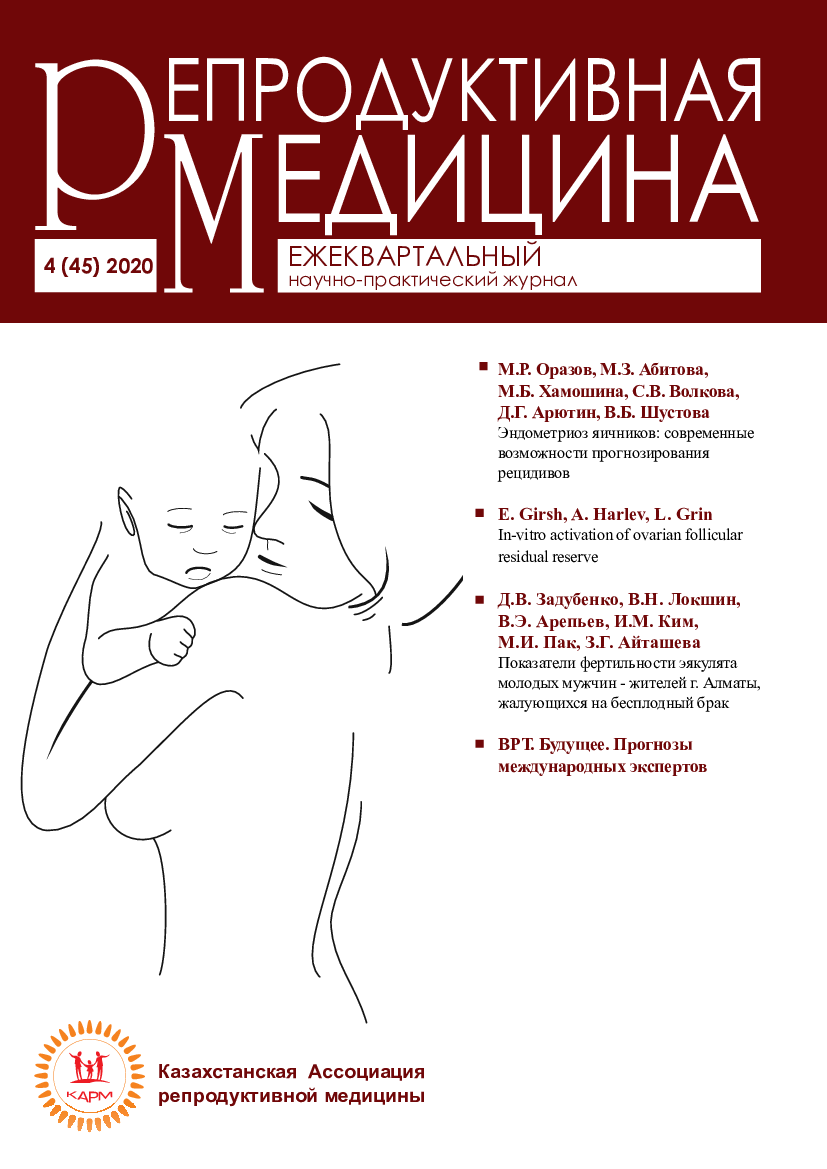Uterotonic drugs in the prevention of postpartum hemorrhages
DOI:
https://doi.org/10.37800/RM2020-1-37Keywords:
postpartum hemorrhage, atonic hemorrhage, uterotonic drugsAbstract
In the world practice, hemorrhages in obstetrics take leading positions within the causes of maternal morbidity and mortality.
800 women die every day due to childbirth complications under the data of the World Health Organization. The majority of
maternal deaths occur during the perinatal period, usually within 24 hours postpartum. It is possible to prevent most of them.
Lack of adequate pre-conceptional training, uncompensated extragenital diseases increase the percentage of pathological births.
Consequently, practicing obstetricians-gynecologists have to face such childbirth complications as postpartum hemorrhage with increasing frequency. Uterine atonia is the main cause of postpartum hemorrhages. Uterotonic drugs administration enables to reduce the risk of postpartum atonic hemorrhages. Particular attention should be paid to postpartum hemorrhage prevention, i.e. the use of uterotonic drugs as an integral part of the active management during the third period in natural labor and caesarean section.
References
WHO Library Cataloguing-in-Publication Data WHO recommendations for the prevention and treatment of postpartum hemorrhage. 1. Postpartum hemorrhage – prevention and control. 2. Postpartum hemorrhage – therapy. 3. Obstetric labor complications. 4. Guideline. I. World Health Organization. ISBN 978 92 4 454850 9 (NLM classification: WQ 330)
Bateman B.T., Berman M.F., Riley L.E., Leffert L.R. The epidemiology of postpartum hemorrhage in a large, nationwide sample of deliveries. Anesth. Analg. 2010; 110: 1368–73.
Blanks A.M., Shmygol A., Thornton S. Regulation of oxytocin receptors and oxytocin receptor signaling. Semin. Reprod. Med. 2007; 25: 52–9.
Thomas J.S., Koh S.H., Copper G.M. Haemodynamic effects of oxytocin given as i.v. bolus or infusion on women undergoing Caesarean section. Br. J. Anaesth. 2007; 98: 116–9.
Archer T.L., Knape K., Liles D., Wheeler A.S., Carter B. The hemodynamics of oxytocin and other vasoactive agents during neuraxial anesthesia for cesarean delivery: findings in six cases. Int. J. Obstet. Anesth. 2008; 17 (3): 247–54.
Robert A Dyer 1, Alexander J Butwick, Brendan CarvalhoOxytocin for labor and caesarean delivery: implications for the an aesthesiologist Curr Opin Anaesthesiol, 2011 Jun; 24(3):255-61.
Kovacheva V.P., Soens M. A., Tsen L.C. A randomized, double-blinded trial of a “rule of threes” algorithm versus continuous infusion of oxytocin during elective cesarean delivery. Anesth. 2015; 123: 92–100.
Prevention of postpartum hemorrhage with the oxytocin analog carbetocin, Werner Rath, Eur J Obstet Gynecol Reprod Biol, 2009 ноябрь; 147 (1): 15-20.
Moertl MG, Friedrich S, Kraschl J, Wadsack C, Lang U, Schlembach D. Haemodynamic effects of carbetocin and oxytocin given as intravenous bolus on women undergoing caesarean delivery: a randomized trial. Br J Obstet Gynaecol. 2011;118:11:1349-1356.
ShakurovaE.Yu., Ivshin A.A., Yatsukhno L.V., Yakovleva I.E., Yakovleva A.I., Kolybina P.V. International experience with pabal (carbetocin) for the prevention and treatment of postpartum hemorrhage. Rossiyskiy vestnik akushera ginekologa [Russian Bulletin of Obstetrician-Gynecologist]. 2016; 16 (4): 44–8. (in Russian)
Amsalem H., Aldrich C.J., Oskamp M., Windrim R., et al. Postpartumuterine response to oxytocin and carbetocin. J Reprod Med. 2014;59 (3–4): 167–73.
Ortiz-Gomez JR, Morillas-Ramirez F, Fornet-Ruiz I, Palacio-Abizanda FJ, Bermejo-Albares L. Clinical and pharmacological study of the efficacy of carbetocin in elective caesareans compared to low and usual doses of oxytocin. Rev EspAnestesiolReanim 2013;60 (January (1)):7–15.
De Bonis M, Torricelli M, Leoni L, Berti P, Ciani V, Puzzutiello R. Carbetocin versus oxytocin after caesarean section: similar efficacy but reduced pain perception in women with a high risk of postpartum hemorrhage. J Matern Fetal Neonat Med. 2012;25:6: 732-735.
Samantha A., Roy S.G., Mistry P.K. et al. Efficacy of intraperitoneal injection of oxytocin in delaying placental detachment: a randomized controlled trial. Journal of Obstetrics and Gynaecology Research. 2013; 39(1):75-82.
Protocol No. 19 Clinical Protocol of Diagnosis and Treatment of "Management of birth [Vedenierodov]," of the Ministry of Health and Social Development dated December 10, 2015.
Pharmacologic intervention for the management of retained placenta: a systematic review and meta-analysis of randomized trials Author links open overlay panel HayleaS.Patrick, Anjali Mitra, Todd RosenCandeV.Ananth, Meike Schuster. American Journal of Obstetrics and GynecologyVolume 223, Issue 3, September 2020, Pages 447.e1 447.e19 September 2020, Pages 447.e1-447.e19
Bureau of National Statistics of the Agency for Strategic Planning and Reforms of the Republic of Kazakhstan. https://gender.stat.gov.kz/page/frontend/detail?id=118&slug=-94&cat_id=3&lang=ru
Additional Files
Published
How to Cite
Issue
Section
License
The articles published in this Journal are licensed under the CC BY-NC-ND 4.0 (Creative Commons Attribution – Non-Commercial – No Derivatives 4.0 International) license, which provides for their non-commercial use only. Under this license, users have the right to copy and distribute the material in copyright but are not permitted to modify or use it for commercial purposes. Full details on the licensing are available at https://creativecommons.org/licenses/by-nc-nd/4.0/.




